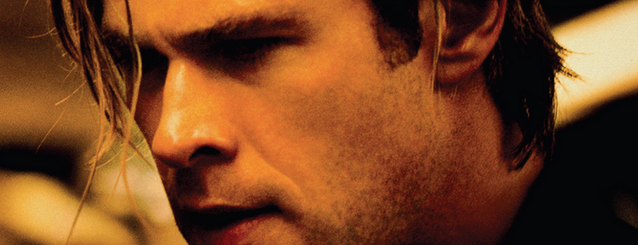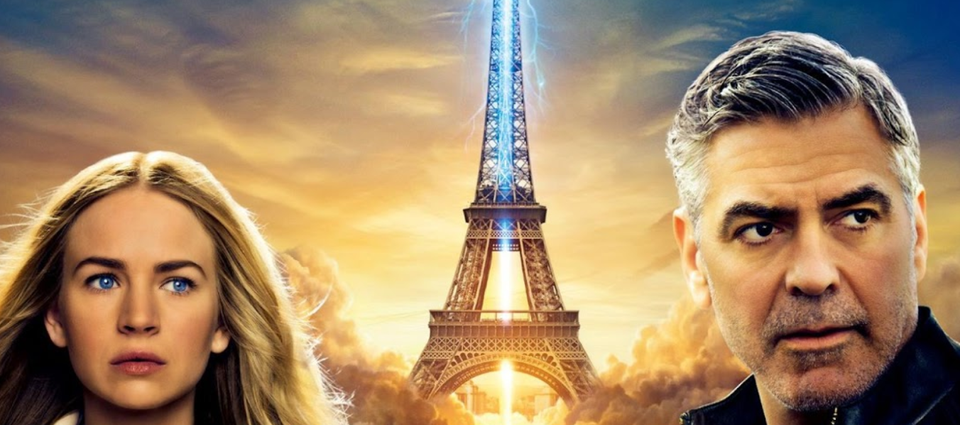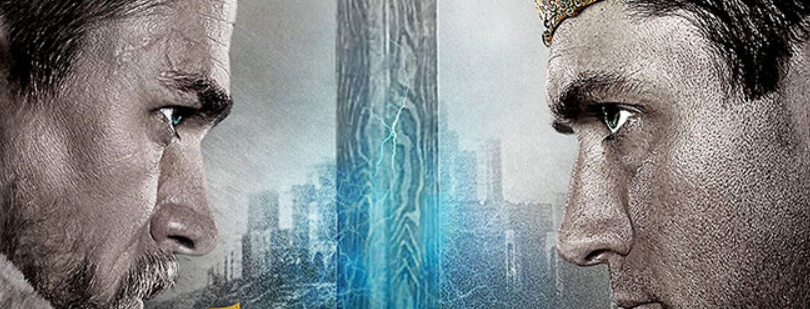The Adventures of Pluto Nash
You might remember Eddie Murphy from lowbrow comedies like The Nutty Professor or Norbit. You might remember him from action comedy capers like 48 Hrs. Let's look at the window in time when he almost completely torpedoed his own career...

The sad, sorrowful tale of The Adventures of Pluto Nash is the confluence of a script trapped in development hell, a megastar actor completely losing his way, and a director on the rise meeting an insurmountable obstacle. Like many other projects which died at the box office, its failure cannot truly be pinned on any one individual. There’s plenty of blame to go around, but most of it has to fall on the megastar at its heart.
When I was growing up, Eddie Murphy was cool. Imagine a comedian turned actor with a predilection for saying shocking things and getting away with it, and you might think of Chris Rock (who was never much of an actor) or maybe Ricky Gervaise (who prefers to play different, awkward and misanthropic versions of himself). Back in the Eighties, we had Eddie Murphy, who erupted from his star turn on Saturday Night Live and made himself an A-lister with 1982’s 48 Hrs opposite Nick Nolte. Movie Eddie and comedy Eddie, at this point, were almost identical. You got a fast-talking, quick-witted, profane young Black man who lives and dies by his street smarts. 48 Hrs was a smash, and Murphy followed it up with Trading Places in 1983 and, for variety, played a fast-talking, quick witted, profane street-smart detective in 1984’s Beverly Hills Cop. That was three big hits in a row. Make it four with The Golden Child, five with Beverly Hills Cop II and… and… let’s say attaching Eddie Murphy to your project practically guaranteed box office success and did so until the 1990s.
Perhaps it was over-exposure and ennui which began to see diminishing returns for Murphy, but I rather suspect he started to choose projects which leaned less on his proven strengths as a comedian and instead may have had more to do with the size of the pay check and the arrival of children in his life. His output shifted away from edgier, motormouthed roles into more family-friendly movies like The Nutty Professor and Dr Doolittle. He was collecting pay checks of around $20 million per movie and the quality of his dramatic work was dropping, and people were noticing. Even when he took roles as cops in, for example, Metro (playing dead straight) and Showtime (allegedly a meta-take on cop movies the way Scream played with horror), nobody gave a damn. Murphy had transitioned from vulgar big mouth to family favourite. He was yet to play Donkey in Shrek, and to rehabilitate his reputation in Dolemite Is My Name. He did, however, receive 20% of the budget to appear in The Adventures of Pluto Nash.
Way back in 1983, the young playwright Neil Cuthbert turned his attention to a science fiction comedy about a man named Pluto Nash. The early drafts of the script feature Nash taking on a corrupt government and apparently leading a lunar uprising. The script ended up in the hands of Al Pacino’s favourite producer, Martin Bregman. Bregman and Pacino had brought the world, let’s see, Serpico and Dog Day Afternoon and Scarface and Sea of Love and Carlito’s Way. That’s a pretty solid slate of movies. Bregman also enjoyed a happy working relationship with Alan Alda, and made a pile of comedies with him too. So far, so good. Cuthbert would later pen comedies such as Mystery Men and Hocus Pocus.
But the script bounced around in development hell for a while, with all sorts of directors and stars getting attached, and various and sundry writers getting paid for rewrites, like Kevin Wade (he of Meet Joe Black and Maid in Manhattan fame) and the Scheinman brothers (whose producer credits are really quite good, but penned such clunkers as North and Mickey Blue Eyes). By the time Warner Bros and Village Roadshow pushed Pluto Nash into production, the script had been gestating for fifteen years. Murphy took $16 million to play the lead opposite Rosario Dawson – Halle Berry and J-Lo both passed on the script, which should tell you something – and respected character actors like Randy Quaid and Joe Pantoliano.
Helming the movie was Ron Underwood, whose comedies were well-regarded by critics and enjoyed by audiences. He’d debuted with the sleeper hit of sleeper hits, Tremors, followed that with City Slickers, worked with a young Robert Downey Jr in Heart and Souls and eventually got the nod for 1998’s Mighty Joe Young, which again pleased critics but found no favour with audiences. Nonetheless, despite the shaky record of the creatives behind Pluto Nash, Bregman and Warner Bros were convinced they had a smash hit on their hands.
The Adventures of Pluto Nash begins with the titular character, played by Murphy, turning up at the nightclub of his old friend. Nash, an ex-con and retired smuggler, saves his friend from gargling acid by (conveniently) purchasing his debt, and the club, from the mob. Seven years later, the club is a great success, filled with customers dancing in a very awkward manner, when Dina (Dawson) arrives and asks for a job. Nash is about to refuse her, but (conveniently) she’s the daughter of an old friend.
Later, a couple of mob heavies pay Nash a visit. They come bearing an offer from the sinister businessman Rex Crater – sell us the club, or else. Nash opts for the ‘or else’ and the mob blow up the bar. Nash, Dina and Nash’s robot Bruno, oddly but gamely played by Quaid, escape (conveniently) both the bombing and the trap the mob set. Our intrepid trio are now on the run.
They hole up in a particularly scabby hotel, where Nash calls his (rather convenient) ex-cop friend who (conveniently) gives Nash the exact clue they need to begin the hunt for Rex Crater. They visit a dodgy body modification expert, who passes on the next clue – Crater is closely linked to the mobster Mike Marucci (an uncredited cameo from Alec Baldwin), but when they get back to the hotel, the bad guys show up. Nash and friends escape by stealing a car which possesses the cheery personality of John Cleese and head off across the surface of the moon to where Nash (conveniently) has a secret hideout from his smuggling days.
It isn’t too long before the bad guys (conveniently) come to kill them all but our heroes escape, but are forced to abandon their vehicle. Death assuredly awaits them when they run out of oxygen, but (much much too conveniently) another smuggler arrives just in time to rescue them and deposit them unharmed at the site of the film’s climax.
A few more minutes of unfunny guff happen before the big and unearned reveal that Rex Crater is in fact a clone of Nash, complete with (conveniently) all of Nash’s memories and abilities, who wants to buy Nash’s club to turn it into a casino. Crater and Nash fight, Nash yeets Crater out of a window from the penthouse and the good guys win. Huzzah for 95 minutes of your life you’ll never get back.
Here are some select quotes from Rotten Tomatoes:
“unremittingly dull”
“classically awful”
“The result is something quite rare in professional show business: 1 1/2 hours of pure blankness”
“a universal waste of talent and time”
“a paralyzingly dopey mess”
I want to make something clear: this isn’t a terrible movie because it was badly made. Oh no. In many respects, this is a very competently made film, to the point where Warner Bros looked at the $80 million they poured into making it and thought, ‘you know what this movie needs? No, no, it doesn’t need to be locked into a vault and sealed away behind a thousand tons of concrete. No, it needs two weeks of reshoots, a new opening, a new ending and a new editor, all for the low low cost of $20 million more dollars. That’s sure to fix it.’
To be fair, much of the expenditure is on show. The sets and production design are lovely. Instead of filming in London, the producers shot in Montreal instead to save money, before building an entire sound stage there for this one movie. Those sets are huge and gorgeous, and I tip my hat to the production design team who worked their nadgers off to bring the place to life.
Special effects, on the other hand, are a mixed bag. When Murphy faces off against himself, the sequences where both of the versions of him have their faces on screen are very well executed, because they interact and there’s smoke passing in front of faces. The film was shot in 2000, so CGI was still developing, but in Crater’s penthouse, for a few moments, good work was done. The rest of it is uninspired, ugly dreck. It looks cheap and unconvincing despite the best efforts of the animators. So bad is it, it would be unimpressive on a TV show of the same period.
But poor CGI is not what made this film such a bomb. The biggest issue is how very flat and uninspired the script and performances are.
Let’s start with the script, because it feeds into everything else. Whatever it was that inspired Neil Cuthbert to sit down and pour his life into the screenplay, it has long since departed or been excised by revision after revision. How, precisely, did a quite serious sounding space opera about overthrowing a corrupt lunar bureaucracy end up an action comedy about a former smuggler? Why is it even set on the moon in the first place? What could have been a diverting Prohibition-era thriller or black comedy about an ex-con trying to run a club in a boom town is instead coated in sci-fi greeblies it neither needs or deserves. There is nothing in the concept or story that screams “set this on the moon!” It isn’t science fiction. It’s an utterly conventional crime caper. You could set it in 1960s Las Vegas and you wouldn’t need to change much. The desert substitutes perfectly well for the surface of the moon, minus all the bouncing around on wires. Many of the design cues owe a lot to the 1950s, too.
Even then, the film fails as both an action movie and as a comedy. Murphy had succeeded in uniting those genres in the past and the script passed through the hands of a number of writers specialising in comedy. The action sequences are neither notably bad nor good. They aren’t exciting and carry no real threat to the protagonists. They are flashy and noisy but these two qualities do not necessarily combine to make for a fun sequence. There isn’t enough meat or heft to the action; there is no spectacle to it.
It is even worse on the comedy front. I don’t recall laughing once at anything in the movie. I think I smiled maybe three times: once at the idea of hundred-dollar bills having Hillary Clinton on them. Once at a billboard for Trump Real Estate, and once at Jay Mohr actually making the script work a little in his very minor role. This is where blame begins to accrue on Murphy’s shoulders like so much dandruff. According to the director, Murphy kept rejecting revisions for the script and insisted his part be rewritten to make Nash a straight guy in the vein of Stallone, and he would ‘bring the comedy’. The problem here is that Murphy drifts through the movie like he is tranquilized. There’s none of the roguishness he brought to his breakthrough roles, none of the snap or pizazz or charm.
It doesn’t help that Pluto Nash, as a character, is about as dull and vanilla a Marty Stu as you could imagine. He immediately comes to save his friend from the mob. He just happens to have the money he needs lying around. Everything is too easy and convenient, and rather than being a magnificent bastard with a hidden heart of gold, Nash is just a nice guy. Everyone likes him. He always knows exactly what to do and had the precise tool he needs. Once again, we have been struck by HBCS. Nash has a want – to stop the mob from taking his club – but, guess what, he doesn’t have a countervailing need or past injury or sin to atone for. He is one-dimensional (and a dull as ditchwater dimension at that) and absolutely no fun to be around. It’s as if Murphy had all of the challenging parts of the Nash character filed off. Nash is kind and considerate to women and loves his mother and cares for his robot buddy and saves his friend and and…he isn’t worthy of the audience’s attention and the film founders as a result. Murphy didn't care enough about the role to imbue it with any kind of spice, and audiences reciprocated this indifference.
The good news is that The Adventures of Pluto Nash didn’t destroy anyone’s career. Ok, so Murphy hasn’t been offered the meaty action-comedy roles he performed so well in at the start of his career, but he’s been in work on a regular basis. And if that work includes such trash as Norbit and Daddy Day Care, he has gone back to the source thanks to contemporary Hollywood’s obsession with nostalgia bait like Coming 2 America and a fourth Beverly Hills Cop movie.
Director Underwood knew he was making a bad movie when shooting Pluto Nash, the studio knew it was bad, and kept delaying it (always a good sign), and added those reshoots. In the end, Underwood carried the can for it. But he moved sideways into TV and he’s enjoyed a long and productive career ever since. Rather than making seven films in twelve years, he’s directed over a hundred episodes of TV since 2003, including series such as Monk and The Walking Dead and Grey’s Anatomy.
The Adventures of Pluto Nash cost $100 million to shoot and probably another $50 million to market. It took $7 million globally. It deserves its ignoble status. Rarely have I sat through such a pointless, empty, stupid, boring and unfunny movie. Nothing about it was offensively bad or egregious. Nothing about it is interesting or worthwhile. Pluto Nash is the worst kind of bad – unoffensive, mushy pablum, and should be avoided at all costs.



